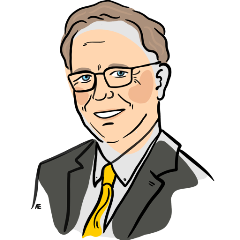 The morning after the first case was reported in Singapore, about 10 experts from Duke-NUS’ safety team and Emerging Infectious Diseases (EID) Programme met in a conference room for an urgent meeting. Another five or so dialled in via phone — virtual meetings had yet to become the norm.
The morning after the first case was reported in Singapore, about 10 experts from Duke-NUS’ safety team and Emerging Infectious Diseases (EID) Programme met in a conference room for an urgent meeting. Another five or so dialled in via phone — virtual meetings had yet to become the norm.
“We didn’t really know about Zoom then,” chuckles Professor Patrick Casey, Senior Vice-Dean for Research at Duke-NUS. “So, we met around the table in the conference room about 10 o’clock to talk about what we could do, because the EID professionals were chomping at the bit to study the virus,” he recalls.
This very eventuality—mobilising an effective response to a potential pandemic—formed part of the bedrock of the EID Programme, which had been conceived in the wake of the first SARS outbreak. And Casey recalls many discussions with the Programme’s founding director, Professor Duane Gubler, and his successor, Professor Wang Linfa, about the necessity of being ready for wartime.
“While we talked a lot about wartime and ensuring that our teams were prepared, our recruitment efforts focused on bringing in the right people to do the best research in the area of emerging infectious diseases,” explains Casey, who had joined the School when it was still only a blueprint.
Together, they brought in a team of scientists who specialised in studying different kinds of infectious diseases — from mosquito-borne diseases like dengue and Zika to respiratory viruses like influenza — as well as how these pathogens interact with their hosts — be they mosquitoes or humans
And during that meeting on 24 January, just twelve hours or so after the first case of the novel coronavirus had been detected in Singapore, these inadvertent avengers assembled, ready to step up to serve the nation and the world.
What everyone around the table wanted at that point was to be able to identify and study the virus. They wanted to isolate it. Culture it. Sequence it to unlock treatments, vaccines, diagnostics and determine from where it came.
“We knew we couldn’t begin mitigation protocols until we had the wherewithal to determine the identity of the virus,” says Casey.
On the ground, the EID professionals would adjust their work to focus on this new threat, while the liaison with the Ministry and the university fell to the School’s head of safety.
“The next 72 to 96 hours were really crazy,” remembers Casey.
Reflecting on the work that would blossom out of those intense early days, Casey is fiercely proud.
“I am terribly proud of what our folks would go on to do and how everyone stepped up to the plate. These were the individuals who, during the Circuit Breaker, would work 14 to 16 hours a day,” he says, singling out the teams who would go on to work in the high-security lab while confined into their “space suits” or personal protective equipment.
“Never once did I have to remind anybody to do their bit,” he says. “In fact, I had the opposite: what I had was people stepping up to the plate, asking what more they could do.”